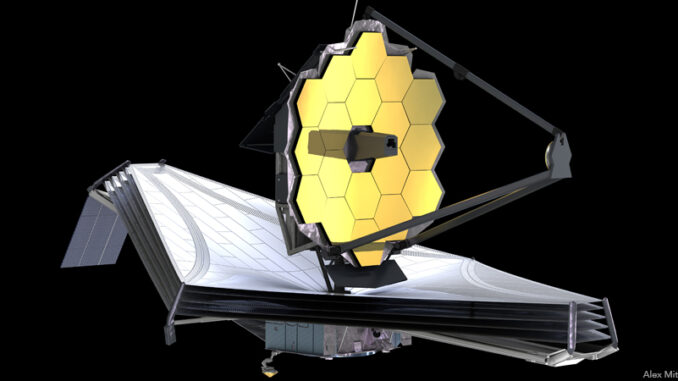
Is there life outside of Earth? That question has fascinated people for thousands of years. Books, movies, television shows, and radio programs have theorized and fantasized about the existence of life on other planets and in other galaxies.
National Aeronautics and Space Administration (NASA) scientists hope that the powerful James Webb Space Telescope gets them closer to the answer–or maybe even finds new life! The Webb telescope, which was launched into space on December 25, 2021, is providing more clues about the universe. On January 11, 2023, Webb’s infrared imagery confirmed the existence of a new exoplanet, named LHS 475 b.
What are Exoplanets?
Exoplanets are any planets beyond our solar system. Most of these planets, like Earth, orbit stars. Some, called rogue planets, do not. Scientists have yet to find any other signs of life on exoplanets, or anywhere in our solar system besides Earth. But they will keep looking in our solar system and beyond.
Our solar system is just a small part of the Milky Way galaxy. There are many other planetary systems in the Milky Way. And there are billions of other galaxies. Scientists have identified about 5,000 exoplanets. The discovery of LHS 475 b is the latest example. Scientists believe, however, that there are many more undiscovered exoplanets in the universe.
What is LHS 475 b like?
Based on their early study of the Webb telescope’s data, scientists know that LHS 475 b is a rocky planet that is about the size of Earth. It is 41 light years away, located in the constellation of Octans. Like Earth, LHS 475 b revolves around a star. While Earth takes 365 days to travel around the sun, LHS 475 b needs just two Earth days to circle its red dwarf star. Imagine living on LHS 475 b and celebrating a birthday every two days! That would be a lot of cake and presents!
Scientists also know that LHS 475 b is a few hundred degrees warmer than Earth, and that its star’s temperature is less than half the temperature of the Sun. The Sun is 27 million degrees Fahrenheit (15 million degrees Celsius) at its hottest point, so LHS 475 b’s star is still really hot!
The biggest curiosity for scientists, though, is if life exists on LHS 475 b. One clue that could help determine the possibility of life is whether LHS 475 b has an atmosphere like Earth. Earth’s atmosphere acts like a jacket for our planet, keeping us warm, providing oxygen, and protecting us from harmful sunlight. If LHS 475 b has a similar atmosphere, it increases the possibility that there are plants and animals there, too. Scientists aren’t yet sure if LHS 475 b has an atmosphere. They will use the existing data, and they hope that more information from the Webb telescope will help them find out.
What is the Webb Telescope?
The James Webb Space Telescope, which is named after a former NASA administrator, was designed by scientists in the United States, Canada, and Europe. The telescope cost $10 billion and took more than 27 years to complete.
Webb is the successor to the Hubble Space Telescope that orbits closely to the Earth. It can view 100 times more distant objects than the Hubble telescope because of its improved mirror technology. The telescope is made up of 18 hexagon-shaped mirrors that are each the size of a coffee table and coated in gold. To protect the mirrors, engineers built a special sun shield that has five layers and is the size of a tennis court.
Webb already has discovered a new planet. Might it find other life forms in the universe? Only time will tell.
